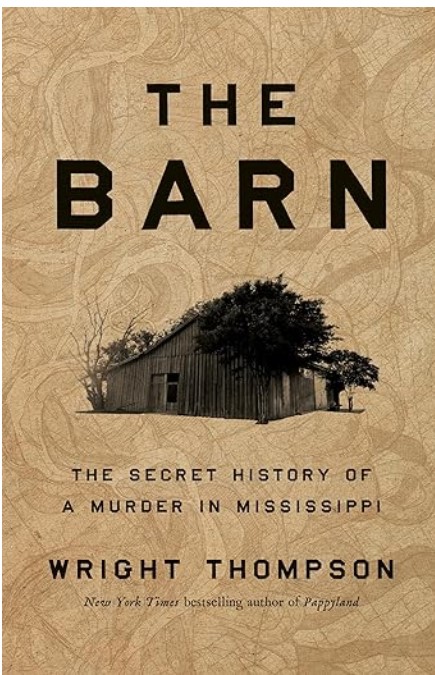Halloween. The TV is re-selling Freddy Krueger and Michael Meyers. We think of full moons and the mythical dangers of vampires and werewolves. Makes me think of the factors that make horror stories the most frightening. For most it is not the imaginary creatures. It’s not the improbable Texas Chainsaw guy.

The most terrifying, the very essence of horror is not the bogeyman. It is the stories about ordinary people, ordinary objects that turn sinister and lethal that scare us the most. We expect everyday life to create stability, a sense of normalcy. We find safety and comfort in the routine of our life. It is when the familiar becomes malevolent that we experience real terror.
So why I am telling you these things? I am preparing you as I recommend one of the most compelling reads I have ever completed. The Barn by Wright Thompson features a simple wooden structure in Sunflower County Mississippi. An old seed storage barn. Unpainted. Worn. Could anything be less threatening? And yet –
In 1955, this unremarkable structure housed the torture and murder of fourteen-year-old Emmitt Till. Visiting from Chicago, the young black boy was the target of a white woman’s accusation that set off his murder. Two white men dragged Emmitt into that innocuous building. They beat him into an unrecognizable mass. They dragged him to the Tallahatchie River and shot him in the head. They tied a 75-lb cotton gin wheel to his neck and threw his body into the river to hide their deed.
From that point runs a stream of lies, a coverup, a protection of others involved. But the truth would not be hidden and Till’s own mother, in raw grief, demanded her son’s casket be open to “let the world see.” That barn still stands, unmarked and unremarkable. It is the monumental cache of a true horror story and a nation’s shame.
While I read The Barn, I thought of the hate, running like a poisoned river, beneath our social foundation. True, there have been strides made and laws passed. Yet, even so many years after this atrocity, that current of evil continues to run deep in this country. Masked by a veneer of political correctness we may have given ourselves permission to believe was no more. But at no time in my memory has that hate risen to the level it achieves today. I think of the school massacres, the grocery store killings and the house of worship murders.
The true horror of ordinary things turning evil is that it forces us to confront the fragility of our reality. What could be more ordinary than your child attending school, your going to the grocery store or attending your place of worship. The mundane becomes monstrous, not because it has changed in any obvious way, but because it has hidden depths of danger we never suspected. This type of horror thrives on making us feel vulnerable in the places and with the things that are supposed to offer us comfort, leaving us to question the very nature of the world around us.
The Barn rips back the veil. We see the perpetrators seeking to undermine the institutions we believe in. We feel that cold shiver of fear that our faith might be unfounded. We feel exposed, alone and vulnerable.
The power hungry wish to scare us into believing that they alone can protect us from the imaginary monsters they have assembled – much like Frankenstein’s creature. We cannot let fear steal our reason but we can stand together. We will “let the world see” we will not be overcome.
I encourage you to read The Barn. It is a cautionary tale about the endurance of evil and our part in combatting it through the preservation of memory and our responsibility to fight against it.
